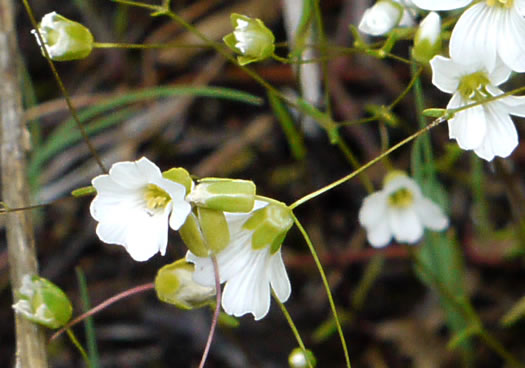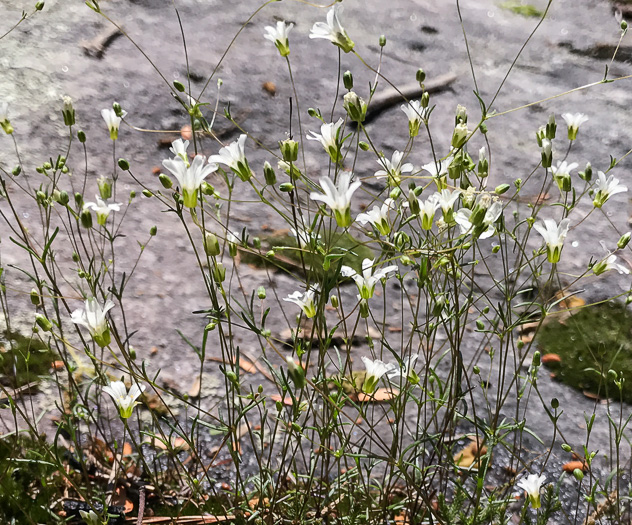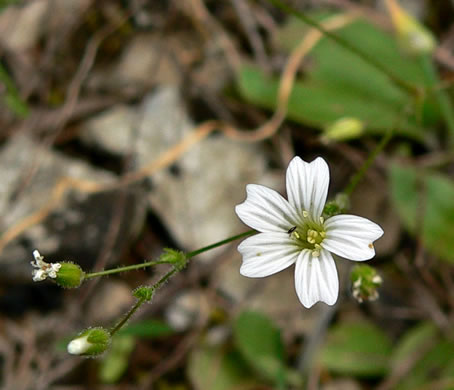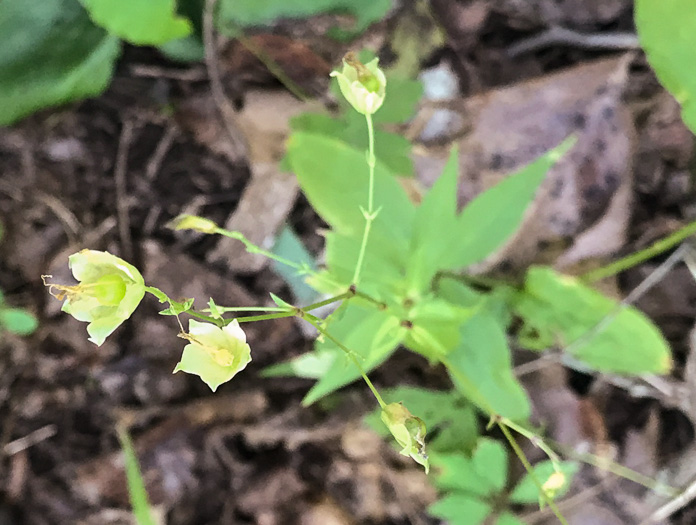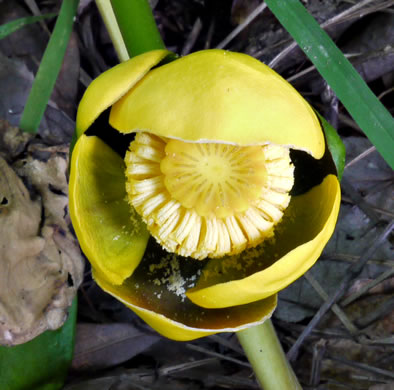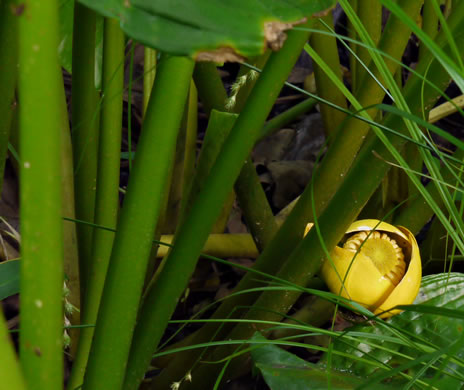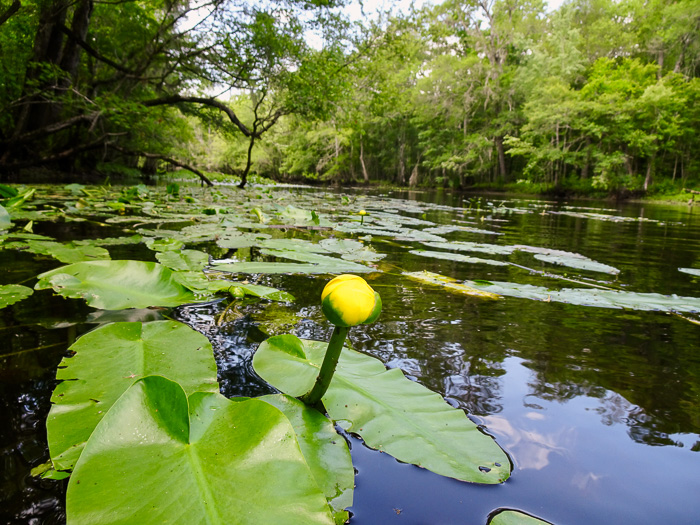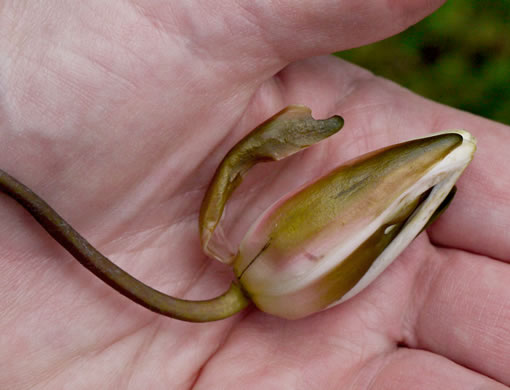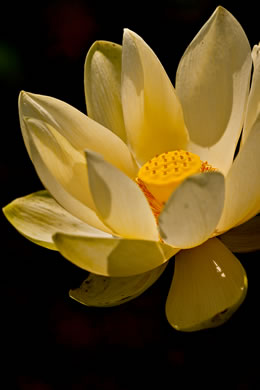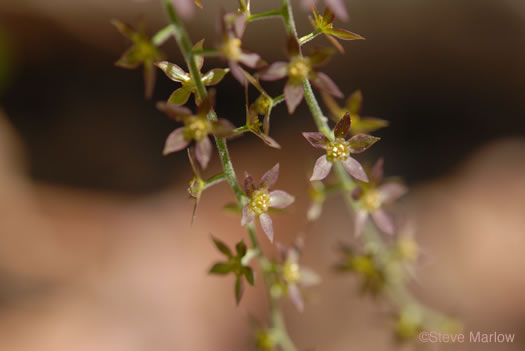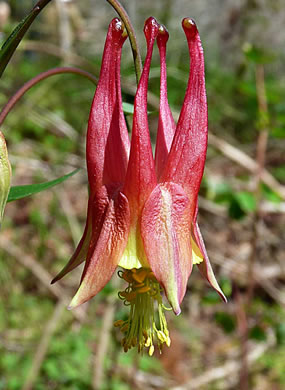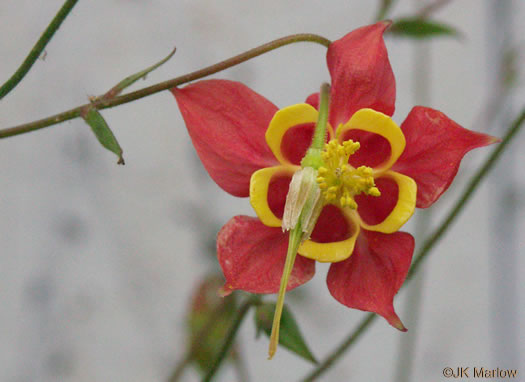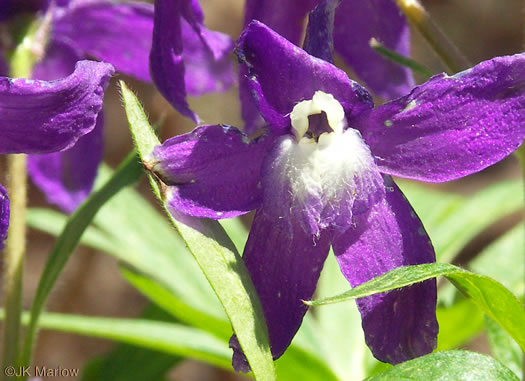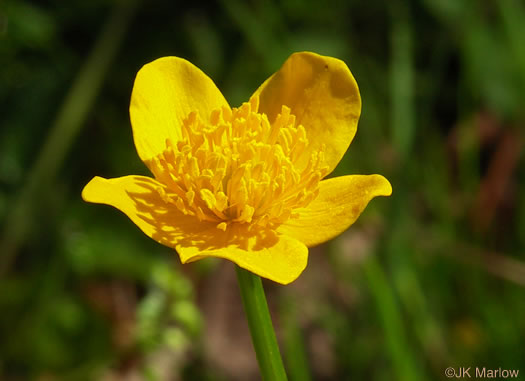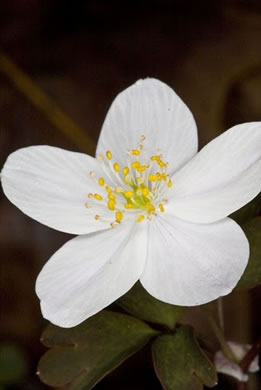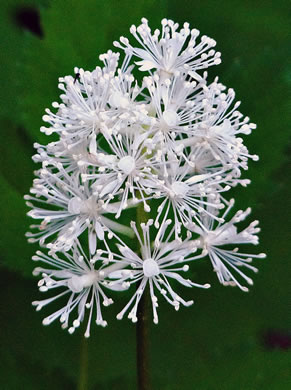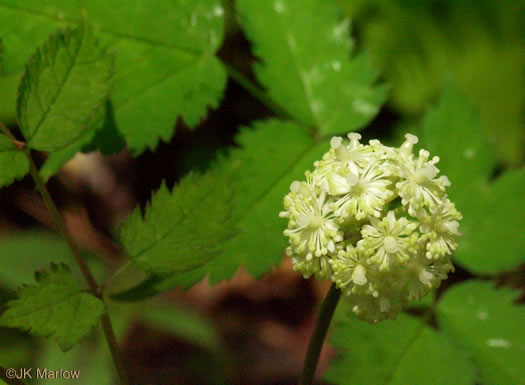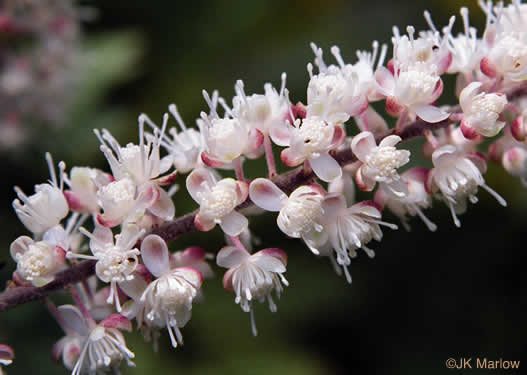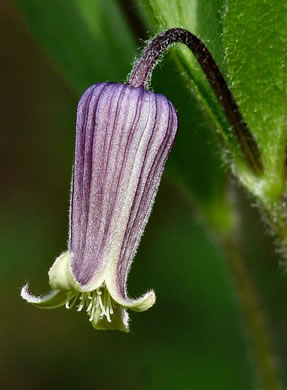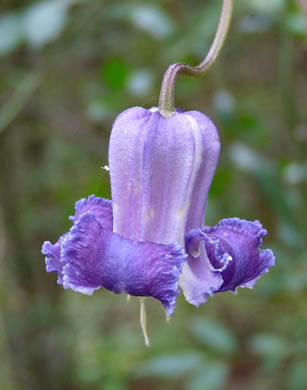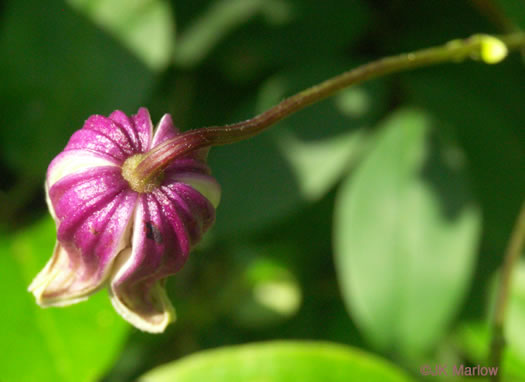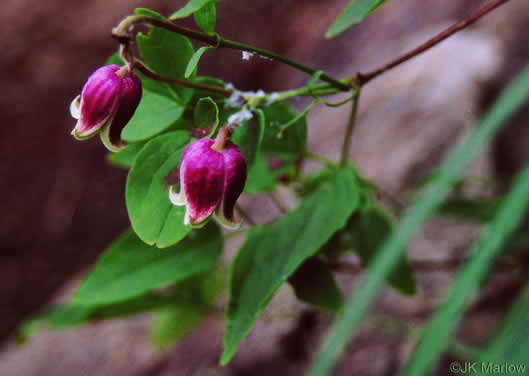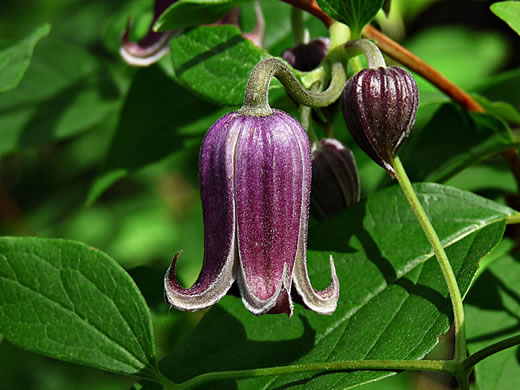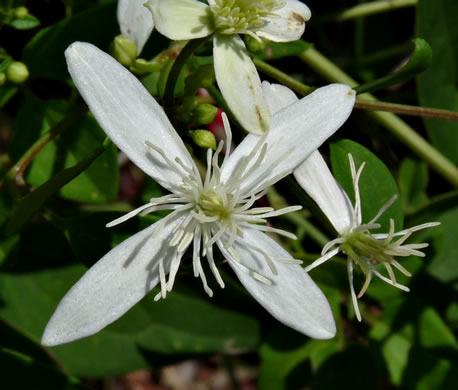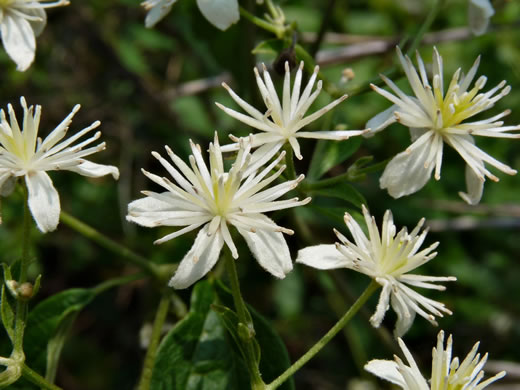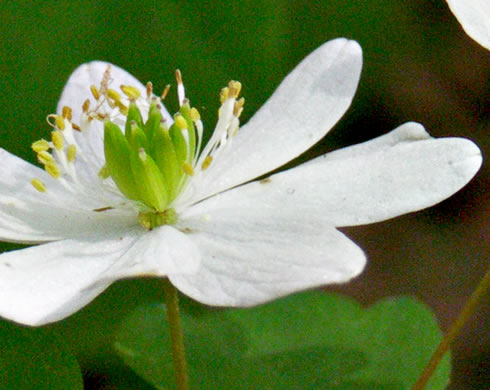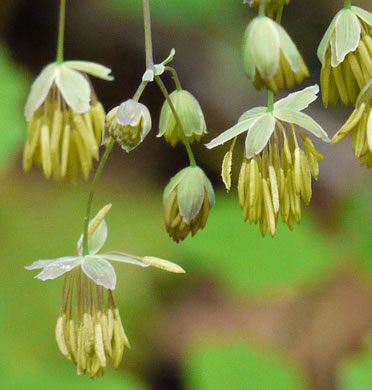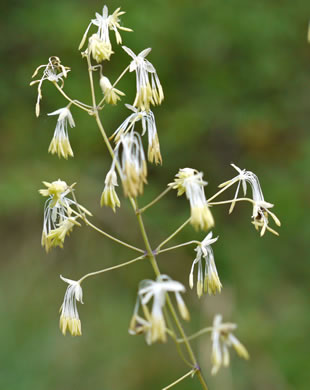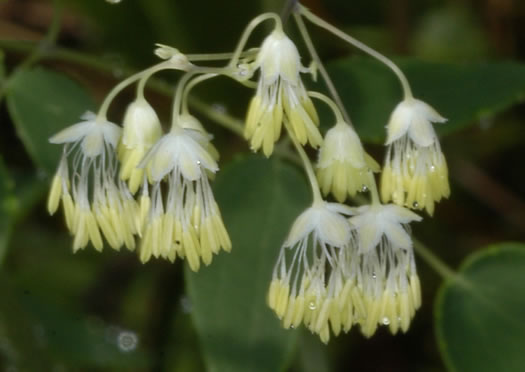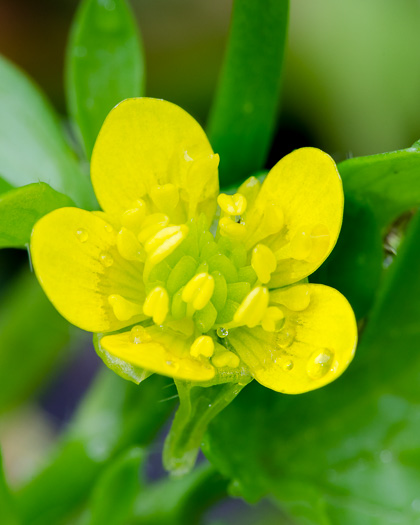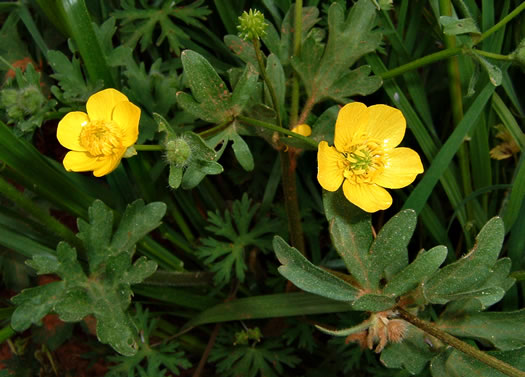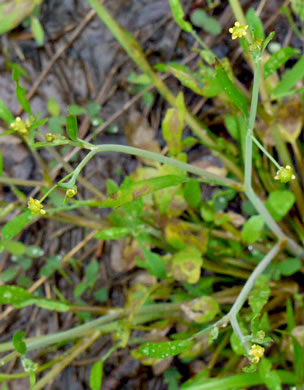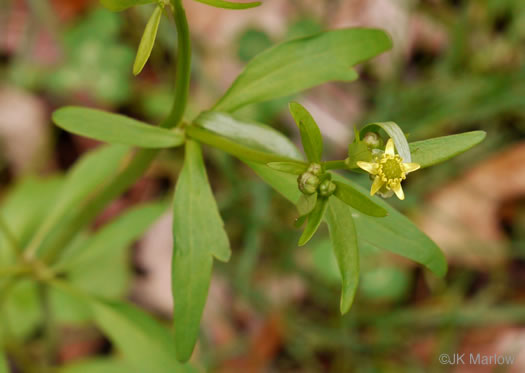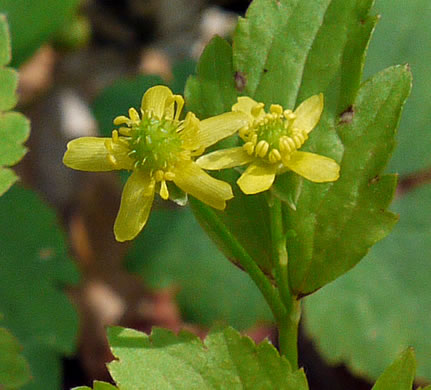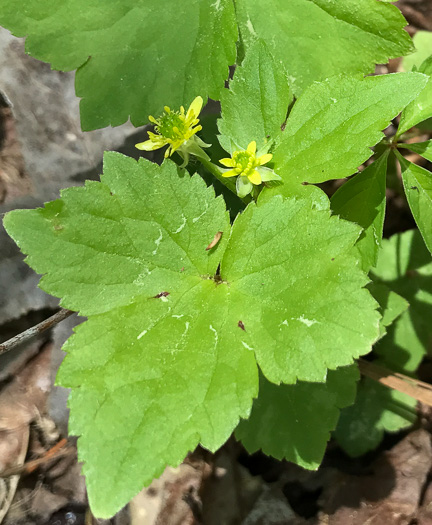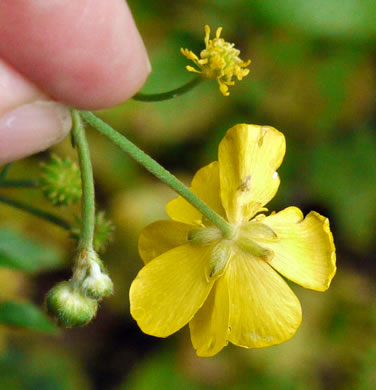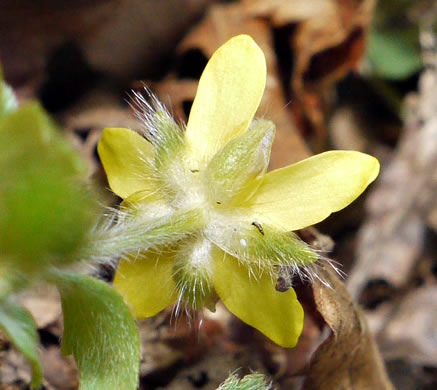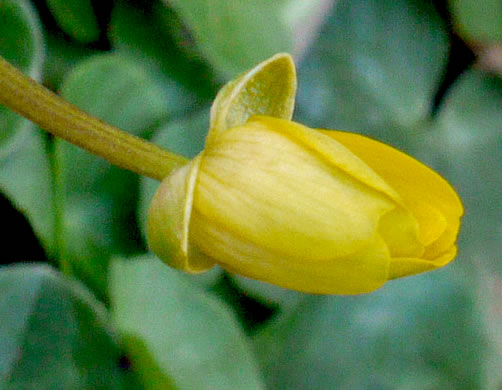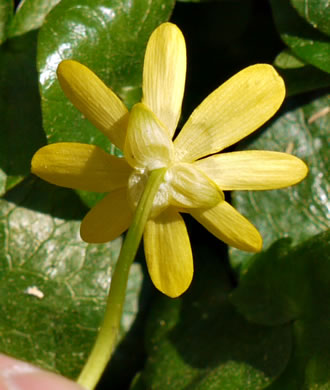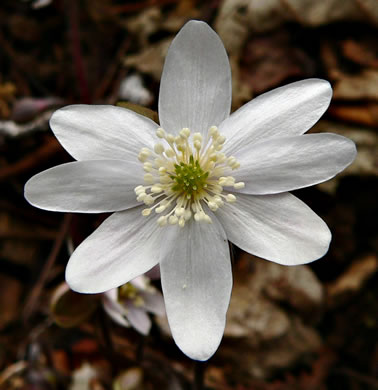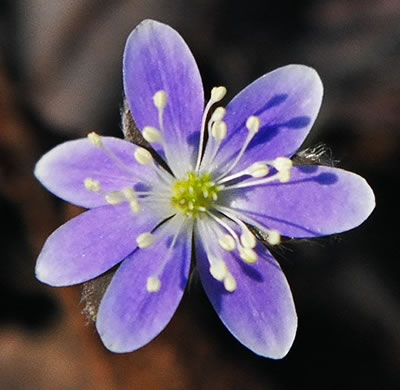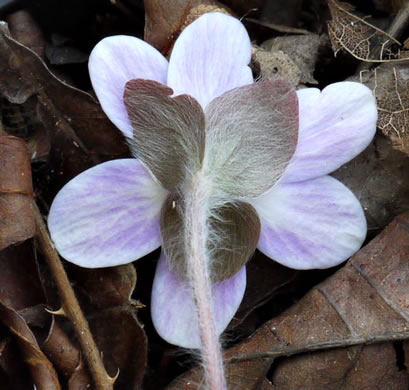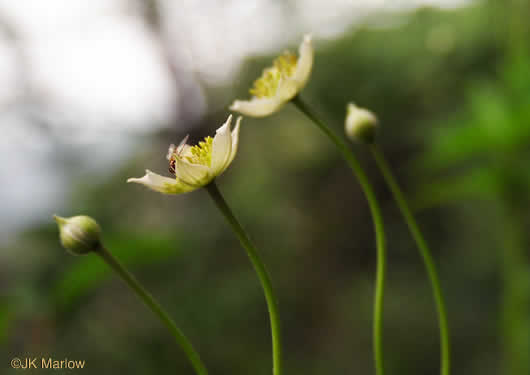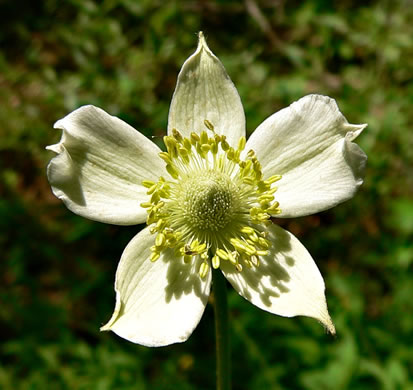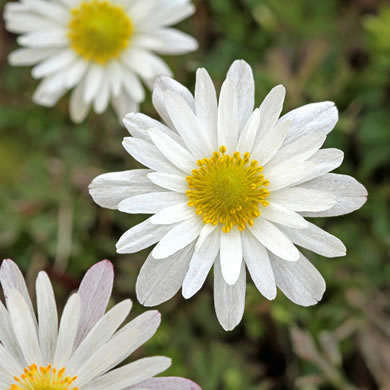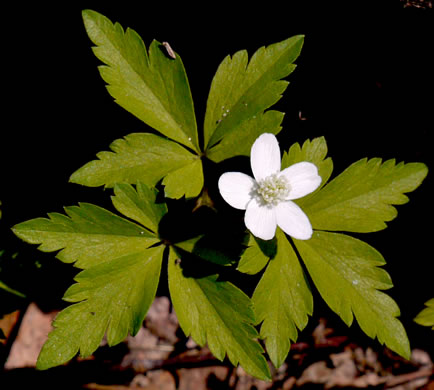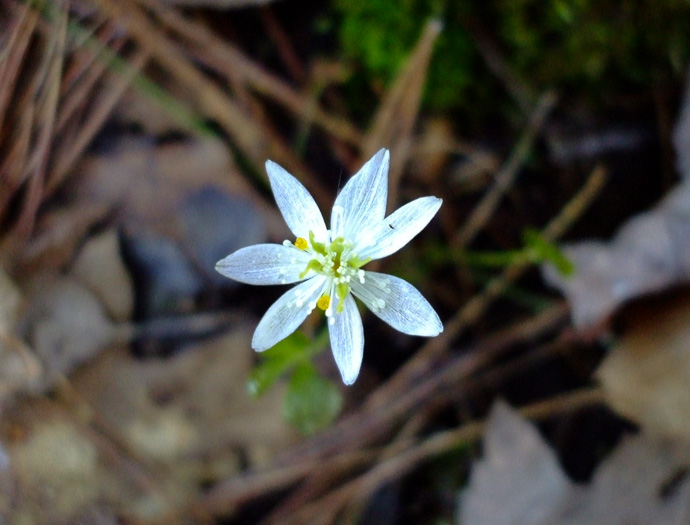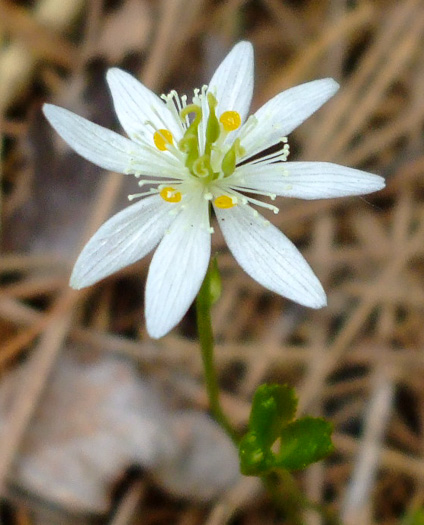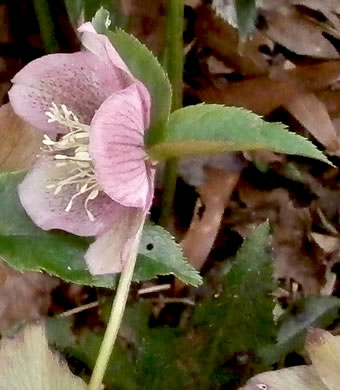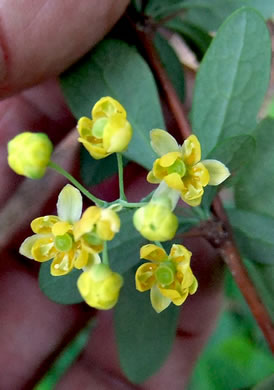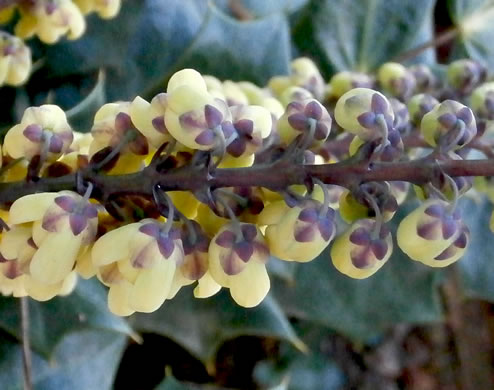Your search found 419 image(s) illustrating the term "sepals." For a written explanation, click on "sepals" in the Glossary.
PAGE 1 PAGE 2 PAGE 3 PAGE 4 PAGE 5 PAGE 6 PAGE 7
To see larger pictures, click or hover over the thumbnails.
To go to the plant's detail page, click its name.
 Appalachian Sandwort,
Geocarpon glabrum
Appalachian Sandwort,
Geocarpon glabrum
Sepals 1.5-4mm long, obtuse, margins scarious, per Vascular Flora of the Carolinas (Radford, Ahles, & Bell, 1968).
 Appalachian Sandwort,
Geocarpon glabrum
Appalachian Sandwort,
Geocarpon glabrum
Cymes 9-15-flowered; sepals 3-4mm long; petals 4-6(-8)mm long, per Weakley's Flora (2015).
 Appalachian Sandwort,
Geocarpon glabrum
Appalachian Sandwort,
Geocarpon glabrum
Larger sepals & larger pleated petals than A. uniflora or alabamensis, per Guide to the Plants of Granite Outcrops (Murdy & Carter, 2000).
 Lime-barren Sandwort,
Sabulina patula
Lime-barren Sandwort,
Sabulina patula
Sepals acute, with 5 prominent nerves, per Weakley's Flora (2012).
 Starry Campion,
Silene stellata
Starry Campion,
Silene stellata
Calyx campanulate, sepals united, per Vascular Flora of the Carolinas (Radford, Ahles, & Bell, 1968).
 Spatterdock,
Nuphar advena
Spatterdock,
Nuphar advena
Flowers w 5-6 large yellow sepals & numerous small petals resembling stamens, per Newcomb's Wildflower Guide (Newcomb, 1977).
 Spatterdock,
Nuphar advena
Spatterdock,
Nuphar advena
Six convex yellow sepals almost conceal the many-lobed stigma, per Wildflowers of the Southern Mountains (Smith, 1998).
 Narrowleaf Pondlily,
Nuphar sagittifolia
Narrowleaf Pondlily,
Nuphar sagittifolia
Usually 6 petaloid sepals and numerous small inconspicuous petals, per Vascular Flora of the Carolinas (Radford, Ahles, & Bell, 1968).
 Fragrant White Water-lily,
Nymphaea odorata ssp. odorata
Fragrant White Water-lily,
Nymphaea odorata ssp. odorata
Sepals uniformly green or reddened, obscurely to prominently veined, per Flora of North America.
 Yonkapin,
Nelumbo lutea
Yonkapin,
Nelumbo lutea
Perianth parts numerous, sepals grading into petals, stamens numerous, per Wildflowers of the Eastern United States (Duncan & Duncan, 1999).
 Yellowroot,
Xanthorhiza simplicissima
Yellowroot,
Xanthorhiza simplicissima
Petals are absent. There are 5 maroon, ovate, acuminate sepals, 2-5mm long, per Vascular Flora of the Carolinas (Radford, Ahles, & Bell, 1968).
 Eastern Columbine,
Aquilegia canadensis
Eastern Columbine,
Aquilegia canadensis
Sepals divergent from floral axis, lance-ovate to oblong-ovate, per Flora of North America.
 Eastern Columbine,
Aquilegia canadensis
Eastern Columbine,
Aquilegia canadensis
The flowers are creatively designed: red sepals alternate w yellow petals, per Gardening with the Native Plants of Tennessee (Hunter, 2002).
 Dwarf Larkspur,
Delphinium tricorne
Dwarf Larkspur,
Delphinium tricorne
Flowers (sepals) usually deep bluish violet, but ranging thru pink to white, per Weakley's Flora.
 Glade Larkspur,
Delphinium carolinianum ssp. calciphilum
Glade Larkspur,
Delphinium carolinianum ssp. calciphilum
Flowers (sepals) white; stems 2-4(7)dm tall, per Weakley's Flora (2012).
 Marsh-marigold,
Caltha palustris var. palustris
Marsh-marigold,
Caltha palustris var. palustris
Usually 5-6 sepals, petals absent, and numerous stamens, per Vascular Flora of the Carolinas (Radford, Ahles, & Bell, 1968).
 False Rue-anemone,
Isopyrum biternatum
False Rue-anemone,
Isopyrum biternatum
Enemion biternatum has 5 petaloid sepals, whereas Thalictrum thalictroides has 5-10, per Weakley's Flora (2022).
 Doll's-eyes,
Actaea pachypoda
Doll's-eyes,
Actaea pachypoda
Sepals and petals drop early, stamens numerous, stigma wider than ovulary, per Wildflowers of the Eastern United States (Duncan & Duncan, 1999).
 Doll's-eyes,
Actaea pachypoda
Doll's-eyes,
Actaea pachypoda
Four to five caducous sepals [that is, they fall off early or prematurely], per Vascular Flora of the Carolinas (Radford, Ahles, & Bell, 1968).
 Common Black Cohosh,
Actaea racemosa
Common Black Cohosh,
Actaea racemosa
The sepals fall off as the flower opens, per Wildflowers & Plant Communities of the Southern Appalachian Mountains and Piedmont (Spira, 2011).
 Fremont's Leatherflower,
Clematis fremontii
Fremont's Leatherflower,
Clematis fremontii
The edges of the sepals can be very hairy, but the surface is glabrous, per The genus Clematis in Georgia (Ware, 2009).
 Southern Leatherflower,
Clematis crispa
Southern Leatherflower,
Clematis crispa
Sepals thick, 1-2" long, blue to purple, the tips normally reflexed and wavy, per Wildflowers of Tennessee (Carman, 2005).
 Northern Leatherflower,
Clematis viorna
Northern Leatherflower,
Clematis viorna
Sepals are petaloid, and there are usually 4 (petals are absent), per Vascular Flora of the Carolinas (Radford, Ahles, & Bell, 1968).
 Northern Leatherflower,
Clematis viorna
Northern Leatherflower,
Clematis viorna
Purple bell-shaped flowers with very thick sepals recurved at the tip, per Newcomb's Wildflower Guide (Newcomb, 1977).
 Northern Leatherflower,
Clematis viorna
Northern Leatherflower,
Clematis viorna
Petals absent. Thick, firm sepals form a leathery urn-shaped calyx, per Wildflowers of Tennessee, the Ohio Valley, and the Southern Appalachians (Horn, Cathcart, Hemmerly, & Duhl, 2005).
 Ware's Leatherflower,
Clematis species 8
Ware's Leatherflower,
Clematis species 8
Sepals usually a uniform maroon/burgundy, but sometimes slightly greenish near the tip –Richard Ware
 Sweet Autumn Clematis,
Clematis terniflora
Sweet Autumn Clematis,
Clematis terniflora
Both this & C. virginiana have 4 white oval spreading sepals about 1/2" long, per Wildflowers of the Southern Mountains (Smith, 1998).
 Virgin's Bower,
Clematis virginiana
Virgin's Bower,
Clematis virginiana
Both this & C. terniflora have 4 white oval spreading sepals about 1/2" long, per Wildflowers of the Southern Mountains (Smith, 1998).
 Mountain Clematis,
Clematis occidentalis var. occidentalis
Mountain Clematis,
Clematis occidentalis var. occidentalis
These large, dull blue flowers are up to 2" and have thin-textured sepals, per Wildflowers of the Southern Mountains (Smith, 1998).
 Windflower,
Thalictrum thalictroides
Windflower,
Thalictrum thalictroides
The white sepals surround a cluster of stamens and pistils [superior ovary], per Wildflowers & Plant Communities of the Southern Appalachian Mountains and Piedmont (Spira, 2011).
 Windflower,
Thalictrum thalictroides
Windflower,
Thalictrum thalictroides
5-to-10 petaloid sepals, usually at least some flowers have 6 or more, per Weakley's Flora.
 Early Meadowrue,
Thalictrum dioicum
Early Meadowrue,
Thalictrum dioicum
Sepals ovate or obovate, 1-3.5mm long. Anthers 1.5-3mm long, filaments longer, per Vascular Flora of the Carolinas (Radford, Ahles, & Bell, 1968).
 Trailing Meadowrue,
Thalictrum debile
Trailing Meadowrue,
Thalictrum debile
Sepals whitish, lanceolate to ovate; filaments colored, not white, per Flora of North America.
 Skunk Meadowrue,
Thalictrum amphibolum
Skunk Meadowrue,
Thalictrum amphibolum
Male flowers have 4-5 light green sepals & drooping greenish-white stamens, per Wildflowers of Tennessee, the Ohio Valley, and the Southern Appalachians (Horn, Cathcart, Hemmerly, & Duhl, 2005).
 Skunk Meadowrue,
Thalictrum amphibolum
Skunk Meadowrue,
Thalictrum amphibolum
Flowers drooping. Five sepals. Filaments white, longer than anthers, per Wildflowers in the Field and Forest: Northeastern US (Clemants & Gracie, 2006).
 spinyfruit buttercup,
Ranunculus muricatus
spinyfruit buttercup,
Ranunculus muricatus
Sepals 3-5mm long; petals 5-7mm long, per Vascular Flora of the Carolinas (Radford, Ahles, & Bell, 1968).
 Sardinian Buttercup,
Ranunculus sardous
Sardinian Buttercup,
Ranunculus sardous
An erect hairy-stemmed annual to 2' tall. Flowers have reflexed sepals, per Wildflowers of Tennessee, the Ohio Valley, and the Southern Appalachians (Horn, Cathcart, Hemmerly, & Duhl, 2005).
 Low Spearwort,
Ranunculus pusillus
Low Spearwort,
Ranunculus pusillus
Petals 1-3(-5), 1-2 mm long, about as long as the sepals, per Weakley's Flora (2015).
 Kidneyleaf Buttercup,
Ranunculus abortivus
Kidneyleaf Buttercup,
Ranunculus abortivus
Petals less than 1/8" long, shorter than sepals, per Wildflowers of the Southern Mountains (Smith, 1998).
 Hooked Buttercup,
Ranunculus recurvatus var. recurvatus
Hooked Buttercup,
Ranunculus recurvatus var. recurvatus
Petals about as long as the sepals, per Weakley's Flora (2020).
 Hooked Buttercup,
Ranunculus recurvatus var. recurvatus
Hooked Buttercup,
Ranunculus recurvatus var. recurvatus
Petals are 0.15-0.25" long, shorter than or equal to sepals, per Wildflowers of Tennessee, the Ohio Valley, and the Southern Appalachians (Horn, Cathcart, Hemmerly, & Duhl, 2005).
 Tall Buttercup,
Ranunculus acris var. acris
Tall Buttercup,
Ranunculus acris var. acris
Sepals spreading, 4-6mm long, per Vascular Flora of the Carolinas (Radford, Ahles, & Bell, 1968).
 Bulbous Buttercup,
Ranunculus bulbosus
Bulbous Buttercup,
Ranunculus bulbosus
Flowers 1" wide with 5 glossy yellow obovate petals and reflexed sepals, per Wildflowers of Tennessee, the Ohio Valley, and the Southern Appalachians (Horn, Cathcart, Hemmerly, & Duhl, 2005).
 Hispid Buttercup,
Ranunculus hispidus
Hispid Buttercup,
Ranunculus hispidus
Sepals usually spreading, to 9mm long [shorter than petals], per Vascular Flora of the Carolinas (Radford, Ahles, & Bell, 1968).
 Hispid Buttercup,
Ranunculus hispidus
Hispid Buttercup,
Ranunculus hispidus
Petals usually obovate, to 15mm long [longer than sepals], per Vascular Flora of the Carolinas (Radford, Ahles, & Bell, 1968).
 Fig Buttercup,
Ficaria verna ssp. calthifolia
Fig Buttercup,
Ficaria verna ssp. calthifolia
Sepals spreading, saccate [pouch-like] at extreme base, glabrous, per Flora of North America.
 Fig Buttercup,
Ficaria verna ssp. verna
Fig Buttercup,
Ficaria verna ssp. verna
Sepals spreading, saccate [pouch-like] at extreme base, glabrous, per Flora of North America.
 Sharp-lobed Hepatica,
Hepatica acutiloba
Sharp-lobed Hepatica,
Hepatica acutiloba
The 5-12 petal-like sepals are white, pink, lavender, purple or blue, per Wildflowers of Tennessee, the Ohio Valley, and the Southern Appalachians (Horn, Cathcart, Hemmerly, & Duhl, 2005).
 Round-lobed Hepatica,
Hepatica americana
Round-lobed Hepatica,
Hepatica americana
Flowers have 5-12 sepals (no petals) & numerous stamens & ovaries, per Wildflowers of Tennessee (Carman, 2005).
 Round-lobed Hepatica,
Hepatica americana
Round-lobed Hepatica,
Hepatica americana
What appear to be petals are actually sepals, and beneath these are 3 bracts simulating a calyx, per Wildflowers of the Southern Mountains (Smith, 1998).
 Thimbleweed,
Anemone virginiana var. virginiana
Thimbleweed,
Anemone virginiana var. virginiana
Petals absent. The five petal-like, whitish sepals are very hairy beneath, per Wildflowers of Tennessee, the Ohio Valley, and the Southern Appalachians (Horn, Cathcart, Hemmerly, & Duhl, 2005).
 Thimbleweed,
Anemone virginiana var. virginiana
Thimbleweed,
Anemone virginiana var. virginiana
Sepals whitish, petaloid, usually 5; petals absent; stamens numerous, per Vascular Flora of the Carolinas (Radford, Ahles, & Bell, 1968).
 Carolina Anemone,
Anemone caroliniana
Carolina Anemone,
Anemone caroliniana
The showy 1.5" solitary flower has no petals and 10-20 sepals, per All About South Carolina Wildflowers (Midgley, 1999).
 Wood Anemone,
Anemone quinquefolia
Wood Anemone,
Anemone quinquefolia
A single flower terminates the stem & usually has 5 white sepals (no petals), per Wildflowers of Tennessee (Carman, 2005).
 Wood Anemone,
Anemone quinquefolia
Wood Anemone,
Anemone quinquefolia
The (usually) 5 white petal-like sepals are often reddish beneath, per Wildflowers of Tennessee, the Ohio Valley, and the Southern Appalachians (Horn, Cathcart, Hemmerly, & Duhl, 2005).
 Goldthread,
Coptis trifolia
Goldthread,
Coptis trifolia
5-7 petal-like sepals surround a bushy cluster of white-tipped stamens & bright green styles, per Wildflowers of the Atlantic Southeast (Cotterman, Waitt, & Weakley, 2019).
 Goldthread,
Coptis trifolia
Goldthread,
Coptis trifolia
Short, golden-yellow, club-shaped petals with nectar-loaded tips alternate with the white sepals, per Wildflowers of the Atlantic Southeast (Cotterman, Waitt, & Weakley, 2019).
 Lenten-rose,
Helleborus viridis
Lenten-rose,
Helleborus viridis
Sepals greenish, and sometimes variously pink- or white-tinted, per Weakley's Flora (2022).
 American Barberry,
Berberis canadensis
American Barberry,
Berberis canadensis
6 sepals & 6 petals, the petals w notched tips (vs. rounded on B. vulgaris), per Field Guide to the Rare Plants of Georgia (Chafin, 2007).
 Leatherleaf Mahonia,
Mahonia bealei
Leatherleaf Mahonia,
Mahonia bealei
Flowers yellow with three whorls of sepals and one whorl of petals, per Flora of China.

